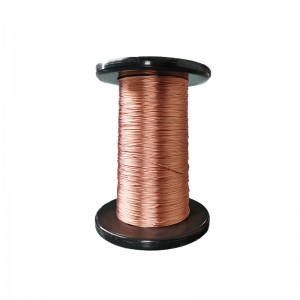Low loss self-adhesive stranded direct welding insulated stranded wire Wireless charger insulated wire
Strand structure
Different types of stranded wire have similarities and differences in use, material, structure, soft and hard as well as appearance (see Table 2-1). Bare wires can be divided into overhead stranded wire, flexible stranded wire and special stranded wire. Stranded core can be classified into round core and profiled core
Concentric layer stranding This is the basic structure of stranded wire Z. The single wires forming the stranded wire are orderly twisted around the center of the stranded wire layer by layer, and the adjacent twisted layers are twisted in opposite directions. The center of the stranded wire can be composed of a single wire or several single wires. Z is usually a single round wire. Concentric layer stranding is also known as normal stranding, which has the advantages of stable structure, easy expression of geometric dimensions, and low material utilization coefficient
Although the single wires forming the strand are also twisted around the center of the strand, the twisted direction of each single wire is the same, so it is difficult to separate layers, and the single wires are not arranged in order. This structure is often used for the stranding of thin single wires with a large number of wires. It is called bundle wire that is made by means of bundle stranding. Stranding is also called bunching or irregular stranding. Its advantages are good flexibility, high material utilization coefficient, and its disadvantages are irregular structure and difficult to express geometric dimensions








